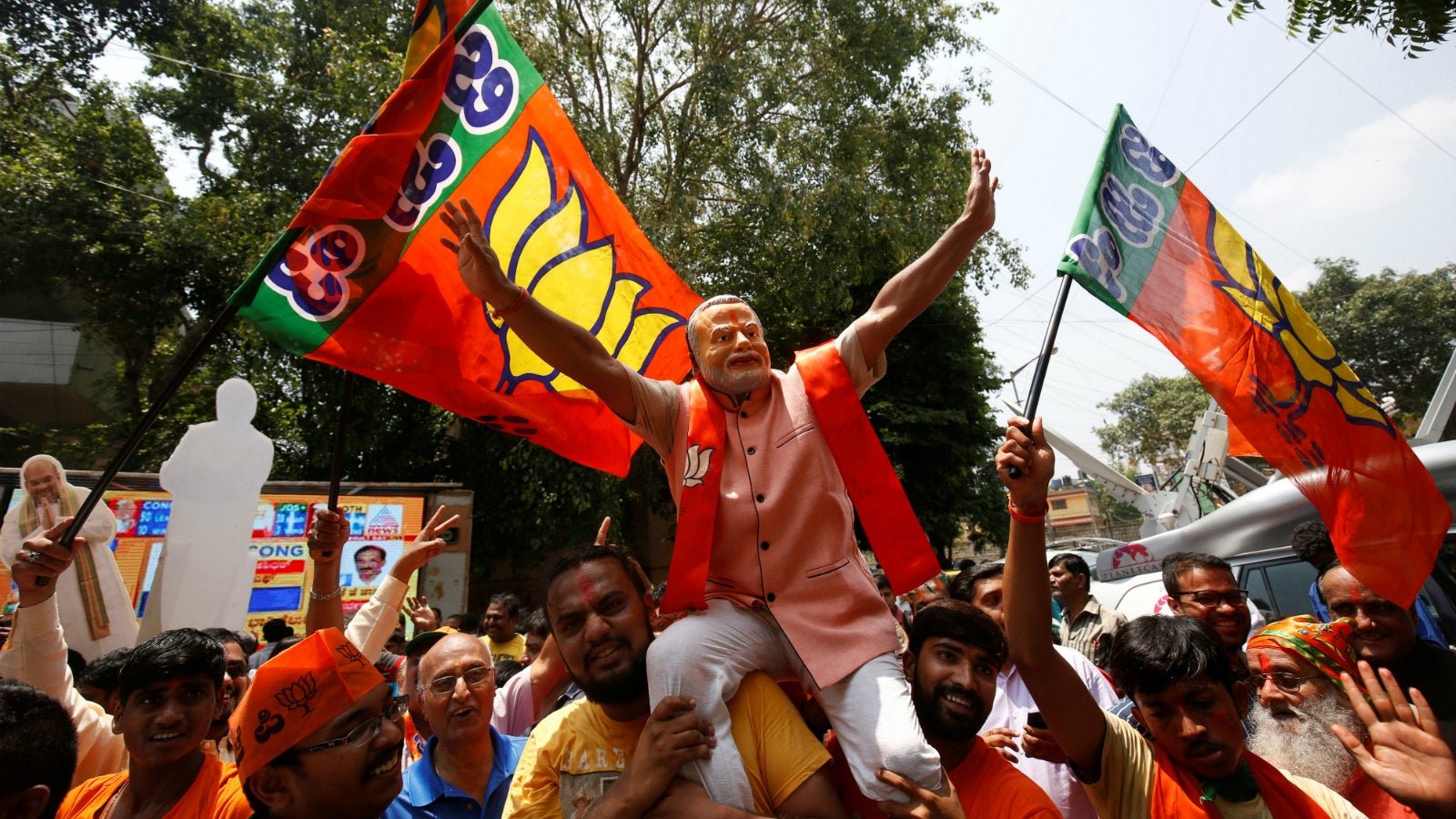Whoever wins Karnataka will inherit one of India’s strongest state economies
The Karnataka election is turning out to be a cliffhanger. The Bharatiya Janata Party (BJP) seems set to bag over a 100 seats in the 224-seat state legislative assembly, up sharply from 40 in 2013. But it may not be enough to form the government.


The Karnataka election is turning out to be a cliffhanger. The Bharatiya Janata Party (BJP) seems set to bag over a 100 seats in the 224-seat state legislative assembly, up sharply from 40 in 2013. But it may not be enough to form the government.
The incumbent Indian National Congress, which has been reduced to less than 80 seats from 122, has decided to throw its weight behind the Janata Dal (Secular) that is likely to have around 40 seats. Together, the two parties will cross the halfway mark needed to stake a claim at forming the next government.
Anti-incumbency has been a key feature of Karnataka politics in the last three decades. No party has been voted to power for a successive term since 1985 in the state that is home to India’s Silicon Valley, Bengaluru. Perhaps this habit of voting out governments has pushed political parties to deliver the goods during their terms, helping Karnataka emerge as one of the best-performing states in the country on basic economic parameters.
So, no matter who eventually comes to power, they will inherit a mostly robust economy, but one with aspects that will need special attention—like agriculture and inflation.
Growing fast
Karnataka’s economy has been ticking along nicely. For most years since 2012, the state has fared better than the national average. And with a gross state domestic product (GSDP) growth of 8.5%, it was the second fastest-growing state in the country during the financial year 2018, only behind Puducherry, among the ten states and union territories to declare data so far.
It is also among the top five states when it comes to the compounded annual growth rate since financial year 2013, according to data from India Brand Equity Foundation.
More jobs
Karnataka’s growing economy also seems to have created more jobs than many other parts of the country. The state has the second-lowest unemployment rate after Gujarat, according to the last labour ministry survey in financial year 2016.
Even the marginalised scheduled castes and tribes, which make up for nearly 30% of the country’s population, have fared better in Karnataka. The community’s unemployment rate in the state is less than half of the national average.
Rising income
A robust jobs market in the state may have also contributed to stronger earnings for Karnataka residents.
The average income of an individual in the state has grown faster than the national trend, and Karnataka’s overall GSDP growth rate.
Karnataka also climbed the ranks for per capita income between financial years 2012 and 2017, according to government data.
Worst in inflation
But not all is well.
Inflation has been a big dampener for the state’s services and consumption-driven economy. The rise in consumer prices has been the worst in the country, according to a January 2018 report by ratings firm CRISIL, which has hit the purchasing power of residents.
Farmer suicides
Another failing that may have weighed against the Congress government is the state of agriculture. Karnataka had more farmer suicides in the financial year 2016 than all other Indian states, except Maharashtra, according to data analysed by Indiaspend.
Karnataka has also fared poorly in irrigating farmlands, which would’ve had an outsized impact given the droughts in 2016. Only 31% of the cultivated area in the state was irrigated in financial year 2016, substantially lower than neighbouring states like Tamil Nadu (56.5%) and Andhra Pradesh (50%).